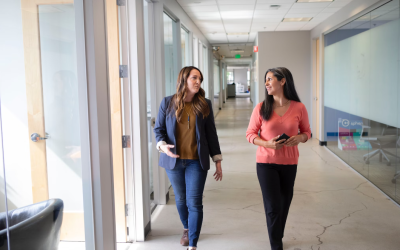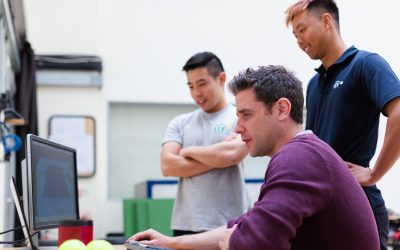Group Dynamics: Definition, Stages and Features
Group dynamics deals with the attitude and behaviour of people in the workplace. It is the process by which people interact with each other in a group. People often take on different roles and behaviours when brought together in a group.
Features of Group Dynamics
1. Team Work
Group dynamics enhance teamwork; they plan tasks in such a way that they work towards a common objective. Effective goals and objectives have to be SMART, that is, specific, measurable, attainable, realistic, and timely.
2. Learn From Mistakes
Learn from the areas that need improvement and make sure to provide solutions. There is always a chance of conflict in the organisation, and the team must accept that they have to deal with different personalities and ideas.
3. Diversity and Inclusion
Encourage diversity through the different thoughts and ideas held by each member and push them to come up with innovative and creative solutions. This aims to achieve goals and objectives by overcoming unconscious bias, plays an integral part in promoting an inclusive workplace, and ensures an effective hiring process.
The Strategies to Improve Group Dynamics are:
1. Know the Team
The team has mutual trust and holds each other accountable for making things happen. Each member of the team plays an important role in how well the team works together. Having the wrong personality in a group leads to poor group dynamics.
2. Tackle the Problem
Understand the problem that the team faces and implement corrective actions. Typically, how long the team has been together determining how well it performs. The leader should guide the development of the group and the path that needs to be followed to achieve their goals and objectives.
3. Define Roles and Responsibilities
A team that lacks focus or direction can develop poor dynamics when people in the team struggle to identify their roles and responsibilities.
4. Identify the Communication Gaps
Communication is vital for team members in the group, so make sure that everyone in the group communicates clearly. Communication is important when handling a team; the team functions through the people who communicate the ideas and have clarity in their work.
5. Review and Take Action
Review the area that needs improvement and take the necessary actions. Every person in the group introduces different qualities and brings along their personality. The team has to acknowledge each person’s style of work. This can help the leader understand how each individual fits well in the group.
The Stages of Group Dynamics
The five stages of group dynamics are,

1. Forming
The initial team formation stage is the process of putting the structured team together. Each member of the group must have a sense of belonging. This is the first stage and requires consent from each member to form the group. The leadership team needs to assign tasks in such a way that members of the team have clarity about the tasks they undertake.
2. Storming
This stage of the process is about organising tasks involving various leadership positions. If the tasks are not well organised, it leads to frustration among the group members over the lack of progress.
3. Norming
In the third stage of group development, efforts are made to establish a process by which the group finds new ways of doing things. The group finds out the differences, analyses the gaps, and respects the authority of the leader. Team members are at ease asking for assistance and solving problems based on feedback.
4. Performing
Team dynamics is all about performance; when the group performs well, they achieve its goals and objectives. When the team spirit is high, it helps to achieve goals and objectives effectively and efficiently.
5. Adjourning
The team members are ready to leave, which causes a significant change for the team. Those who perform well in the group not only achieve all their goals and objectives but also celebrate with others. If the team member feels any uncertainty about what lies ahead, boost their morale by showing confidence in their work.
Frequently Asked Questions
1. What are the stages of group dynamics?
The stages of group dynamics are forming, storming, norming, performing, and adjourning. Forming is the first stage and involves organising the team. Storming is about organising tasks. The norming stage is where the group finds gaps and solves them through feedback. The performing stage is about achieving goals and objectives. Finally, team members are ready to leave the group on a positive note.
2. How to handle conflicts during group dynamics
First, understand the problem and find the reasons for the conflict. Conflict is caused by organisational structure, limitations on resources, and differences of opinion among members of the group. Understand the issue by making sure that every person in the group generates ideas equally and has their opinion heard and respected.
3. What is the difference between a group and a team?
A group is composed of people with different priorities, but a team is made of people with common objectives who share the same vision and goal and strive to achieve them.
Closing Thoughts
Group dynamics refers to the effect of roles and behaviours on other group members and the group as a whole. Typically, when teams are together for some time, they find the momentum and team chemistry to get the work done faster.
Group dynamics are associated with groups; this means that when a group exists, its members tend to interact and work with everyone in the team. They have to adapt themselves to the circumstances and be aware of their relationships with the people in the group.
LogicMelon
Award-winning recruitment software that will find, attract, hire and analyse the way you want to work. At LogicMelon, we have experienced software recruitment marketing specialists to help you build effective recruitment solutions supported by the best customer service you’ll find anywhere!
Email: sales@logicmelon.com or call LogicMelon (UK) +44 (0) 203 553 3667 (USA) +1 860 269 3089
9 Tips for Formulating an Inbound Recruitment Strategy
The goal of recruitment funnel optimisation is to attract, engage, assess, and ultimately hire the best candidates.
Optimising Your Recruitment Funnel: The Journey to Hiring Success
The goal of recruitment funnel optimisation is to attract, engage, assess, and ultimately hire the best candidates.
What is Workforce Development?
Workforce development is the process of identifying and addressing workforce needs to improve productivity.


